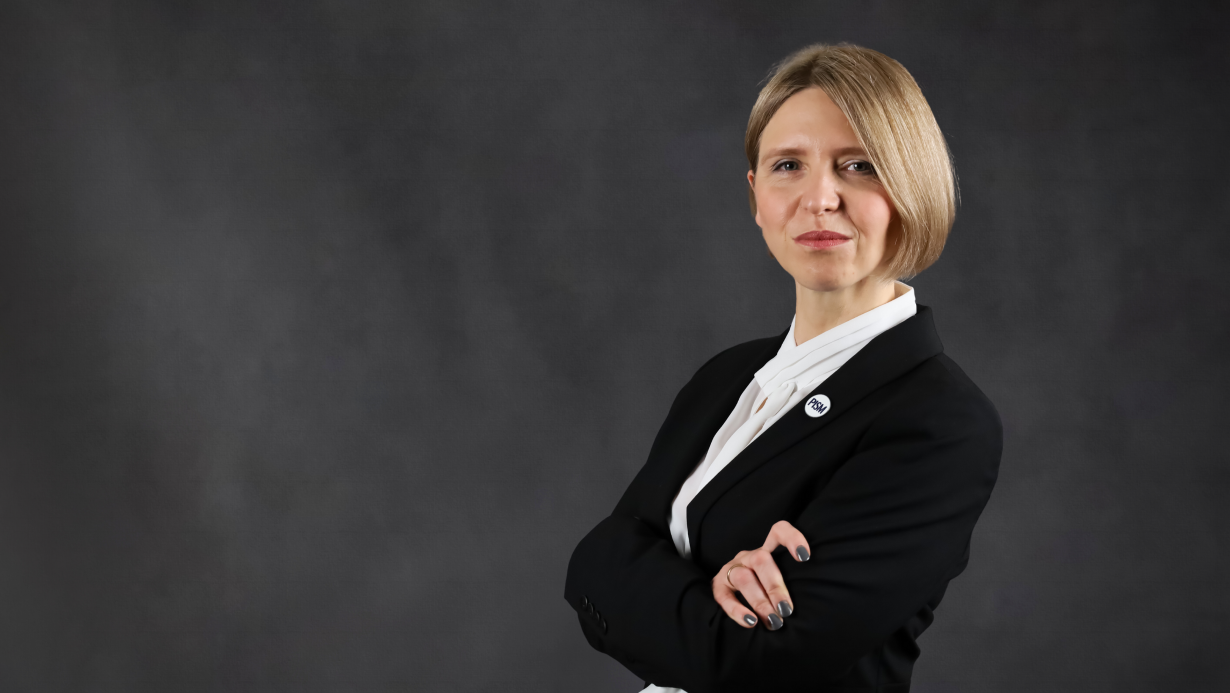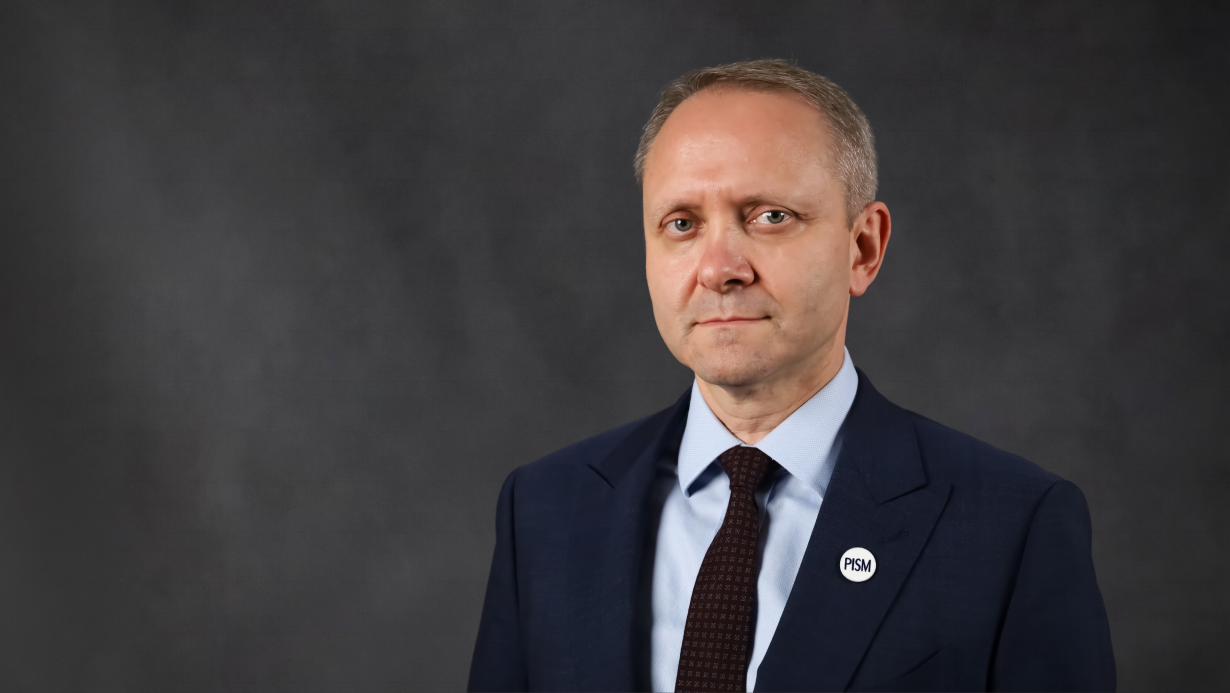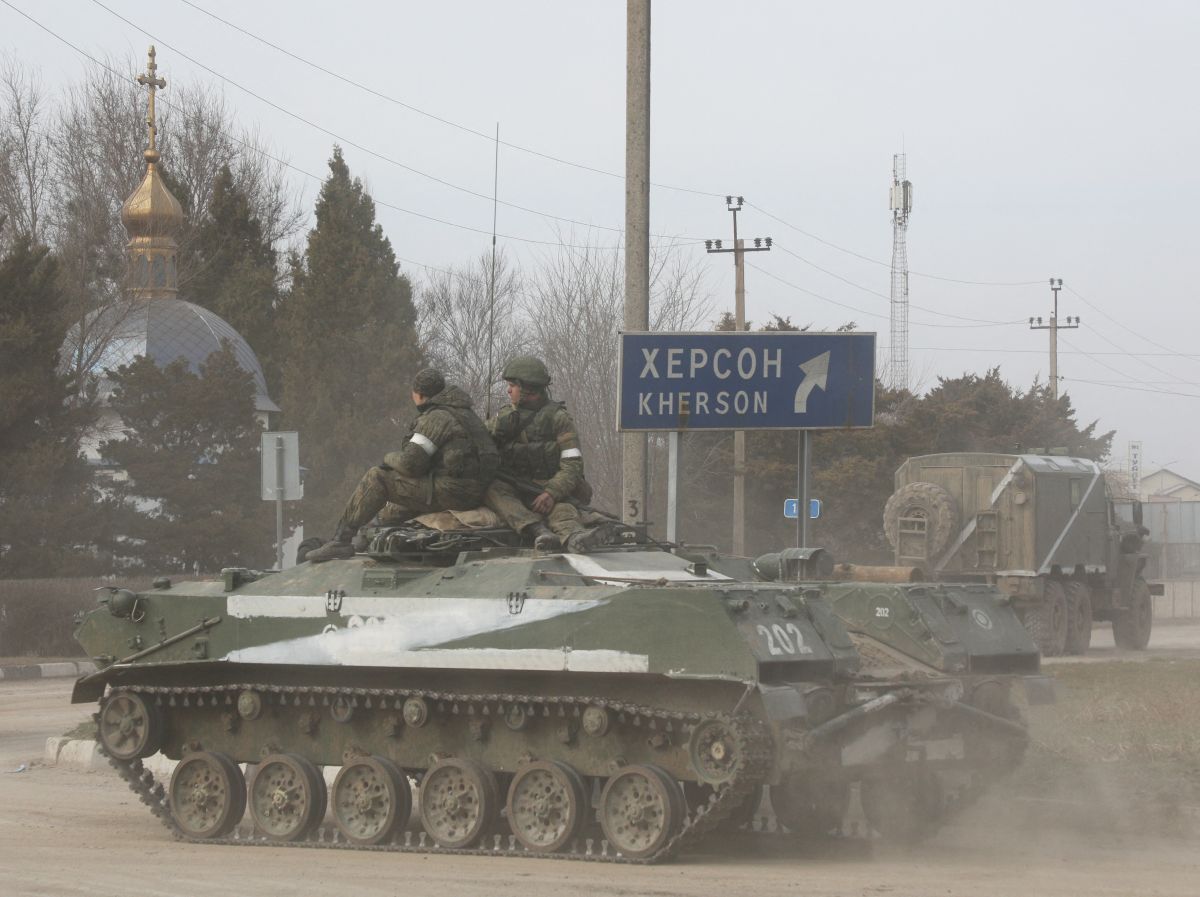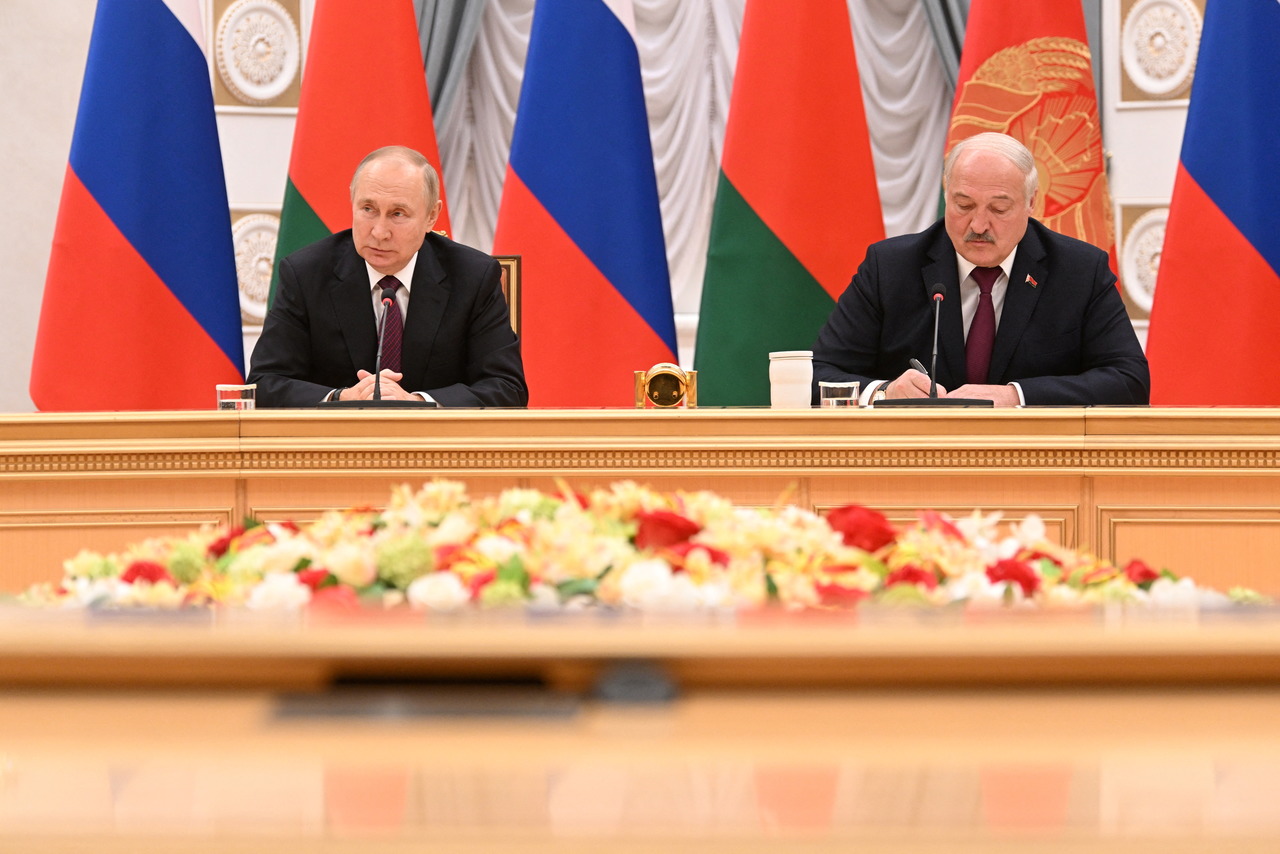The Impact of the War in Ukraine on the Political Stability of Russia
Although the Russian army has suffered a series of defeats in Ukraine, the Putin regime does not feel defeated and its stability is not threatened. The ability to control the internal situation allows the Russian authorities to wage war with Ukraine for years to come in order to achieve the assumed strategic goals of subordinating Ukraine and enforcing a buffer zone on the territory of some NATO countries. This requires Western countries to take a long-term approach to deterring the Russian threat and supporting Ukraine’s ability to regain control over lost territory.
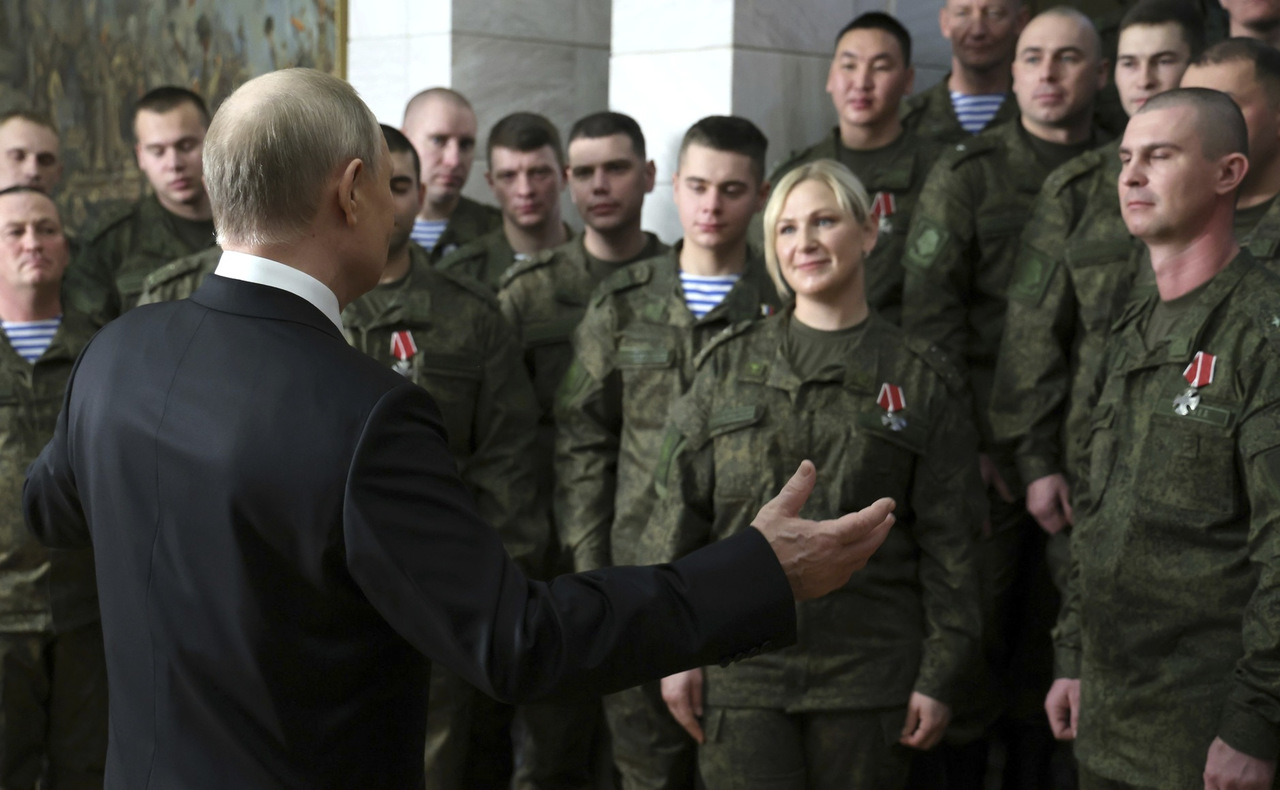 Mikhail Klimentyev/Kremlin Pool / Zuma Press / Forum
Mikhail Klimentyev/Kremlin Pool / Zuma Press / Forum
On 24 February 2022, Russia launched a full-scale invasion of Ukraine to achieve goals it was unable to achieve despite annexing Crimea in 2014 and sparking a conflict in the east of the country. Its intention was to capture Kyiv, overthrow the Ukrainian government, and take political control over the entire country. Statements by the Russian authorities, including Vladimir Putin, and how the war has been waged, including numerous cases of murder of civilians, rape, and mass deportations of children, indicate that the goals officially defined as “de-Nazification” and “demilitarisation” assumed the complete disarmament of Ukraine and the liquidation of the Ukrainian national identity, and thus the creation of conditions for the complete subordination of Ukraine.[1] These aspirations are part of Russia’s broader strategic plan, which is to maintain its sphere of influence over most of the area of the former USSR.
The Russian ultimatum issued to the U.S. and NATO in December 2021 also defined political goals towards Western countries: abandonment of the Alliance’s open-door policy, withdrawal of U.S. and NATO member state troops to pre-1997 positions, and legally binding limits on the Alliance’s ability to conduct collective defence missions on its Eastern Flank.[2] By creating a zone with reduced security guarantees—a buffer zone—on part of NATO territory, Russia could more effectively influence the policies of the countries in the region, pursue its strategic goals, and strengthen the stability of the regime.[3]
So far, however, the Russian military operation in Ukraine has failed to achieve its original goals. Russia was unable to capture Kyiv or change the government in Ukraine. The main reasons for the failures were the determined Ukrainian resistance, poor assessments of the situation by the Russian leadership, poor command and logistical problems compounded by corruption and low morale of the military. The support that Ukraine has received from a coalition of the international community has also been key to its survival. The U.S., the EU, and other countries have imposed severe sanctions on Russia, which have hit the economic and energy sectors and are intended to influence the calculations of the power elite and make it harder for Russia to wage war. The sanctions so far directly target more than 170 Russian companies and more than 1,300 people (oligarchs and politicians). Western countries have frozen about half of Russia’s financial reserves ($300 billion out of over $600 billion) and have started to limit imports of Russian energy resources in order to permanently reduce dependence on supplies from this direction. Some restrictions have already slowed the Russian economy. According to various estimates, Russia’s GDP decreased by 2.3% to 5.6% in 2022.[4]
Some countries also seized the assets of Russian politicians and oligarchs in the West worth a total of €19 billion and set up special teams to search for the assets of persons subject to sanctions. They also were restricted from entering the EU and other countries. The President of the European Commission Ursula von der Leyen announced the use of confiscated assets to rebuild Ukraine, as well as the establishment of a special tribunal to try Russian war crimes.[5]
Ukraine to date has received equipment and armaments from the U.S. and dozens of other countries worth about $35 billion, including artillery systems, armoured personnel carriers, tanks, and millions of rounds of ammunition. Thanks to this support, Ukraine’s military was able to inflict heavy losses on Russia, estimated at more than 100,000 killed and wounded, and go on a counter-offensive, regaining about 40% of the territories previously occupied by Russia.
The government in Kyiv proposes a “just peace”, which includes demands for the restoration of Ukraine’s full territorial integrity, security guarantees, punishment for war criminals, and compensation for losses.[6]
The initial failures and the swift reaction of Western countries forced Russia to revise its plans. Putin announced the annexation of four Ukrainian regions—Lugansk, Donetsk, Zaporizhzhia and Kherson—and took measures to strengthen the ability to wage war in the long term. To this end, he announced a partial mobilisation of 300,000 people, started switching the economy to war production, and announced reform of the armed forces, including increasing their number from the current 1 million troops to 1.5 million. It is also trying to strengthen cooperation with China, Iran, and the alliance with Belarus.[7] Russia rejects Ukraine’s peace plan and counters that Ukraine must accept the annexation of its territories as a precondition for peace negotiations. The Russian army continues to attack Ukrainian critical infrastructure to deprive residents of electricity and heating, cause a humanitarian crisis, and weaken the public’s will to defend the country. By increasing the costs for states supporting Ukraine through an energy crisis, the influx of refugees, expenses related to the reconstruction of Ukraine, the threat of using nuclear weapons, and the threat of escalation against NATO territory, Russia is also trying to enforce a change in their policies and make them recognise the territorial gains as the new status quo.
The political stability and future of the Russian regime, as well as of Putin himself, have become inseparable from the course of the “special military operation” and the decisions of the Russian leadership regarding its conduct. Three main scenarios, or variants, of the development of the situation can be distinguished.
Variant 1—Regime Consolidation
Russia’s military failures in Ukraine will not have a negative impact on the stability of the Russian regime or on its ability to wage war. Russian propaganda effectively has convinced the public that Russia’s problems are the result of the involvement of the so-called collective West and NATO. It also uses disinformation about the presence of Western troops in Ukraine. The authorities hide the scale of their failures, offer high compensation for injuries or death on the battlefield (equivalent to $43,500 for those wounded and up to $174,000 for the families of soldiers killed in action), and have enacted tougher penalties for criticism of the war.[8] Despite the dissatisfaction of part of the society with the mobilisation (several hundred thousand people may have left the country to avoid conscription),[9] the majority of the Russian public supports the “special military operation” in Ukraine.[10] In September 2022, when mobilisation was announced, this support fell from 80% to 72% and remained at this level in the following weeks.[11] These figures differ only slightly from the official support for Putin, which fell to 77% in September, but supposedly rose again to 80% in November.[12]
The Russian authorities will try to limit the negative effects of the sanctions on the economy by increasing the export of raw materials, in particular to India and China, raising taxes on domestic companies, and using reserves from the $170 billion National Welfare Fund to cover the budget deficit. Representatives of the political and business elite will also challenge the effectiveness of the sanctions by exploiting legal loopholes and transferring their assets to family members. Even if the interest groups on which the regime is based (political and business elites, the oligarchy, and security sectors, the so-called siloviki) incur some losses related to the conduct of the war, they will defend the stability of the system as it still guarantees their prosperity and security. The regime can also count on the support of the leader of the Russian Orthodox Church, Patriarch Kirill, who presents the war as a defence of Russian values.[13]
A protracted war will not cause significant tensions within the existing political system. In Russia, there is no opposition strong and organised enough to use the war to undermine the legitimacy of the regime or challenge the system, based on openly pro-Kremlin parties or licensed opposition. Dmitry Medvedev, the former president and Putin confidant who heads the largest political party, United Russia, sets the tone for aggressive war rhetoric and consolidates this grouping. Other parties either openly support the war (e.g., the pro-Kremlin Liberal Democratic Party of Russia, Just Russia) or cautiously distance themselves from it (Communist Party of the Russian Federation). Criticism of the conduct of military action remains strictly controlled, with the target not Putin directly, rather the Minister of Defence Sergei Shoigu, Chief of the General Staff Valery Gerasimov, and other military commanders. In this way, the regime can create the appearance of an open debate and controls public emotions more effectively. Criticism also concerns the ineffectiveness of the military operation and the overly lenient approach to the Ukrainian defenders, rather than the decision to launch the war.
Increasing repression to ensure support for the regime will gradually transform Russia from an authoritarian system where freedoms are limited but citizens do not have to actively support the regime's policies, into a totalitarian system that demands such support. Fuelling the sense of danger associated with the threat of defeat in Ukraine will lead to the consolidation of the power elite and society, which will make it easier for the regime to wage a long-term war.
With the appointment of a special Coordinating Council and an increase in military spending, Russia has put industrial production into war mode. Since it may take several months to increase armaments production, it will be crucial for Russia to obtain military support from other countries, including China, North Korea, Belarus, and Iran. Although Russia has been cut off from Western technologies that can be used by the military, it will rely on, for example, greater imports of semiconductors from China. Thanks to the location of about 12,000 soldiers in Belarus, it will be able to use the Belarusian army to increase the scale and pace of training of freshly mobilised recruits. Russia’s progressing military integration with Belarus will also make it easier for it to conduct an offensive from that country and put pressure on Alexander Lukashenka’s regime to join it.[14] If there are high casualties or another large-scale mobilisation is necessary, the Russian authorities may declare a state of emergency and close the borders to stop the exodus of potential conscripts. Russia will strengthen its ability to defend the occupied territories and take the offensive to achieve its strategic goals. It will also try to rebuild its potential to threaten Western countries with an escalation of the conflict to NATO territory.
Variant 2 - Controlled Change of Leadership
Despite the attempts to counteract the sanctions, they will hinder the functioning of Russian politicians, businesspeople, and their families in the West. The prolonged war, the possible progress of a Ukrainian counter-offensive, the costs associated with the sanctions, and above all, the threat of losing control over the occupied territories, especially Crimea, will lead to uncontrolled criticism of Putin and increase tensions among the ruling elite.
In view of the tangible effects of the embargo on Russian oil introduced at the end of 2022, the sale of which provided about 40% of revenues to the budget, there will be a deeper economic slowdown in Russia. Russia’s budgetary problems will deepen, which will force the government to use reserves from the National Welfare Fund faster. Russia may not have the necessary funds to modernise its armed forces, wage war, and maintain social spending at the current level. A prolonged conflict will also make it difficult to control public moods. Russian society will receive more and more information about defeats at the front, the dire conditions of the Russian armed forces, and the incompetence of the military and political leadership. The first wave of mobilisation caused unprecedented social unrest not seen since 2001 (47% of Russians reported they felt fear). Subsequent waves will increase dissatisfaction with the progress on the front and the internal situation in the country.
To reduce tensions and prevent an uncontrolled struggle for power, Putin may agree to hold early elections (or hold them as planned in 2024) to select a credible successor within the existing political system. His victory, supported by electoral manipulation, would make it easier to defuse social tensions and maintain control over the army and other interest groups. It would also provide an excuse to propose peace talks with Ukraine. In August last year, 44% of Russians supported such talks, with the percentage growing to 48% in September and 57% in October.[15] A change in power and the offer of peace talks with Ukraine would be presented as an opportunity to improve relations with the West. Russia would openly present negotiations without preconditions as a concession, expecting in return the lifting of some of the sanctions imposed by the West. The peace initiative proposed by the Russian authorities would primarily prevent the loss of further territories, improve the economic situation, calm the public mood, and reduce tensions within the ruling elite. Thanks to the stabilisation of the internal situation, Russia would gain the necessary strategic pause, have time to rebuild its potential, and launch a counter-offensive at a convenient moment in the future.
Variant 3 – Internal Destabilisation
The threat of a military defeat in Ukraine, especially after a long and costly war, may be a signal to Russian society that the Russian authorities have lost their mandate. It would also increase the risk of mutiny among military commanders, who would be forced to fight a war with insufficiently trained soldiers and without the necessary equipment. The collapse of the myth of “invincible Russia” would further undermine the morale of the army and ordinary citizens. As a consequence, there could be a radical drop in support for Putin and a wave of protests demanding that those responsible for the defeat be held accountable. Internal disputes within the power elite would also be reflected in business and administrative groups at the local level and in individual entities of the Russian Federation.
In such a situation, against the backdrop of a strong wave of protests, ethnic tensions could increase. They will be felt especially in the North Caucasian entities of the Federation, which experienced the effects of the two wars in Chechnya, and those regions that felt the greatest impact of the current war, both social and economic.[16] Representatives of ethnic minorities constitute a significant percentage of the conscripts, although they often decide to serve for financial and personal reasons (e.g., family tradition).
However, even strong ethnic tensions are unlikely to pose a significant threat to the cohesion of the Russian Federation. In the vast majority of administrative and political entities of the Federation, ethnic Russians constitute the majority. They are a minority only in the North Caucasus, in several regions of Central Russia, and some in Siberia,[17] but the majority of residents there have negative experiences related to the collapse of the USSR and the chaos of the 1990s.[18] The inhabitants of these regions are also under the strong influence of regime media and propaganda, which would counteract secessionist tendencies.
Regardless of the scale of protests in the country, in most regions, residents would also oppose secession for political and economic reasons. From their perspective, a strong central authority is necessary to ensure control over a weak and corrupt local administration, and only strong central authorities will be able to introduce the necessary reforms after a failed military campaign. Secession would also mean an even greater economic collapse of most of the Federation’s entities because the regions remain dependent on subsidies from the central budget, which, in the case of Chechnya, for example, accounts for as much as 80% of local expenditures. Many regions, in order to ensure the functioning of administration and public services (education, transport, healthcare) must use credits and loans from the central budget. At the end of March 2022, the debt of the regions amounted to almost RUB 2.5 trillion ($36 billion).[19] In the coming years, due to the negative effects of sanctions and investors’ reluctance to purchase regional bonds, an increase in this kind of debt can be expected. Even the richest regions where energy resources are extracted (e.g., Yamalo-Nenets Autonomous District or Magadan Oblast) would not be able to survive as independent states because they are dependent on Moscow and the central government, which manages the transmission and transport infrastructure.
The regions are also dependent on the central authorities to maintain public order, and therefore, without Moscow’s support, they may not be able to cope with the increase in crime on their own (including the most serious crimes committed by former soldiers). It will therefore be in the interest of local authorities and residents to maintain a strong central leadership.
Maintaining internal stability will also be the main goal of the elites in Moscow, which is why they will suppress any attempts at social rebellion, either by force or economic methods. Russians also remember the difficult period of the 1990s (so-called Yeltsinism), which will also be a factor limiting social radicalisation. Thus, even a prolonged conflict in Ukraine is unlikely to cause a long-term and deep crisis for the Russian state.
Conclusions and Recommendations
Given the current trends related to the war in Ukraine (potential military impasse, Russia’s ability to minimise the effects of sanctions), the most likely variant of the development of the political situation in Russia is the consolidation of the regime. Russia will not give up its strategic goals. It will strengthen its ability to wage a long-term war and, despite sanctions, will try to rebuild its potential. This will help the elites protect the political system in Russia, which will deepen the authoritarian tendencies of the Russian authorities towards citizens, but will also consolidate the anti-Western course in foreign and security policy. This is the most negative variant for Ukraine and the countries trying to strengthen its ability to defend itself. Regardless of whether Russia sees itself as a winner or a loser in this conflict, it will be a long-term threat to Ukraine, NATO, and the EU.
If the war continues, it may become more difficult for Ukraine’s partners to maintain aid at the current level. Increased pressure to make concessions to Russia (e.g., the lifting of some sanctions and recognition of territorial losses by Ukraine) may be expected. In such a situation, there would be a high risk that Russia would make another attempt to subjugate Ukraine at a convenient moment in the future, for example, when the U.S. is engaged militarily in the Indo-Pacific. Russia could also increase threats to NATO in order to force concessions on the formation of a buffer zone in Central and Eastern Europe, which would increase the risk of a direct confrontation between Russia and NATO.
The second variant is less likely. Only when the legitimacy of the regime is threatened would there be a chance of a controlled change of leadership or a proposal for peace talks. In such a situation, however, the aim of the regime would be to obtain a strategic pause to allow the elites to stabilise the internal situation. Also, in this variant, Russia would not give up its strategic goals and after rebuilding its potential, could resume the offensive at a convenient moment in the future.
The least likely is the third variant, in which the regime is unable to control the social and political tensions, which leads to the destabilisation of the state. Nevertheless, the prospects of the disintegration of the Russian Federation, loss of control over nuclear weapons, or the strengthening of China’s position will be used in some countries as arguments against putting too much pressure on Russia and limiting military support for Ukraine.
Since regime consolidation and a long-term threat from Russia is the most likely variant, NATO, in line with the new strategy adopted in Madrid, should increase its ability to defend the Eastern Flank and win a possible conflict with Russia. A key element of NATO and EU policy will be countering hybrid threats, increasing the defence industry potential, and rapid investments in arms, equipment, and ammunition, both for defence and deterrence and in support of Ukraine.
It is in the interest of Ukraine and its partners to prevent a military impasse that could turn the war into a long-term conflict of attrition. Ukraine should obtain international support enabling it to regain its territorial integrity by military means. With the ability to drive Russian troops out of the east of the country and to regain control over Crimea, Ukraine could threaten the legitimacy of the Russian regime. Only when faced with the threat that it would be impossible to hide the extent of the disaster experienced by Russia in Ukraine will the regime agree to negotiate with Ukraine in good faith. Even if it is merely an attempt to obtain a strategic pause, Ukraine’s defence capabilities, international sanctions, and NATO’s credible deterrent posture may force Russia to recognise that Ukraine’s subjugation and enforcement of the buffer zone along NATO’s Eastern Flank has become unrealistic. This would be the first step to correcting Russian security policy and abandoning attempts to achieve political goals through military aggression.
[1] A. M. Dyner A. Legucka, M. Piechowska, “Russia invades Ukraine,” PISM Spotlight No 12/2023, https://www.pism.pl/publikacje/rosyjski-atak-na-ukraine; M. Domańska, “Putin’s article: ‘On the historical unity of Russians and Ukrainians’,” OSW Analyses, 13 July 2021, www.osw.waw.pl; C. Apt, “Russia’s Eliminationist Rhetoric Against Ukraine: A Collection,” Just Security, 1 November 2022, www.justsecurity.org.
[2] A. Legucka, “Russia Demands Security Guarantees from the U.S. and NATO,” PISM Bulletin No 214/2021, 15 December 2021, https://pism.pl/publikacje/rosyjskie-zadania-gwarancji-bezpieczenstwa-wobec-usa-i-nato.
[3] A.M. Dyner, M. Terlikowski, “Potential Impact of Russia's Demands on NATO's Defence and Deterrence,” PISM Bulletin No 218/2021, https://www.pism.pl/publikacje/wplyw-zadan-rosji-na-potencjal-obrony-i-odstraszania-nato.
[4] “Infographic - Impact of sanctions on the Russian economy,” European Council, 19 December 2022, www.consilium.europa.eu.
[5] “Statement by President von der Leyen on Russian accountability and the use of Russian frozen assets,” European Commission, 30 November 2022, https://ec.europa.eu/.
[6] “G7 Statement on Ukraine,” White House, 11 October 2022, www.whitehouse.gov
[7] A.M. Dyner, “Belarus And Russia Move to the Next Stage of Integration,” PISM Bulletin No 2/2023, https://www.pism.pl/publikacje/kolejny-etap-integracji-bialorusi-i-rosji.
[8] “Families of Russian soldiers killed in Ukraine to be paid over 7 mln rubles lump sum—Putin,” Interfax, 3 March 2022 r., www.interfax.com.
[9] Gogov, 10 November 2022, https://gogov.ru/news/890632
[10] “Ukraine and Donbas,” Levada Centre, 24 February 2022, https://www.levada.ru/2022/02/24/ukraina-i-donbass-2/.
[11] K. Buchholz, “Support For Putin’s War Waning in Russia,” 11 October 2022, Statista, www.statista.com.; https://www.levada.ru/2022/10/27/konflikt-s-ukrainoj-oktyabr-2022-goda/.
[12] “Do you approve of the activities of Vladimir Putin as the president (prime minister) of Russia?,” Statista, 3 November 2022, www.statist.com.
[13] A. Szabaciuk, “Patriarch Kirill’s Holy War,” IEŚ Commentaries, Instytut Europy Środkowej, No 573 (75/2022), 3 March 2022.
[14] A.M. Dyner, “Belarus And Russia Move to The Next Stage Of Integration,” PISM Bulletin No 2/2023, https://www.pism.pl/publikacje/kolejny-etap-integracji-bialorusi-i-rosji.
[15] “Conflict with Ukraine: October 2022,” 27 October 2022, Levada Centre, https://www.levada.ru/2022/10/27/konflikt-s-ukrainoj-oktyabr-2022-goda/.
[16] The North Caucasus comprises the North Caucasian Federal District of Russia (autonomous republics of Ingushetia, Dagestan, Chechnya, North Ossetia, Adygea, Kabardino-Balkaria, Karachay-Cherkessia and Stavropol Krai), Krasnodar Krai, Kalmykia, and Rostov Oblast.
[17] “Nacjonalnyj sostaw Rosii 2022 (pieriepis 2010),” Statdata (Russia), http://www.statdata.ru/nacionalnyj-sostav-rossii.
[18] According to a December 2021 FOM poll, 66% of those polled felt regret about the breakup of the Soviet Union. See: Fond, “30-letije Biełowieżskich sogłaszenii,” Obszcziestiwennoje Mnienije, https://fom.ru/Proshloe/14665.
[19] “Debt dependence of regions on the centre will continue to grow,” 23 March 2022, Kommersant, https://www.kommersant.ru/doc/5270996.



